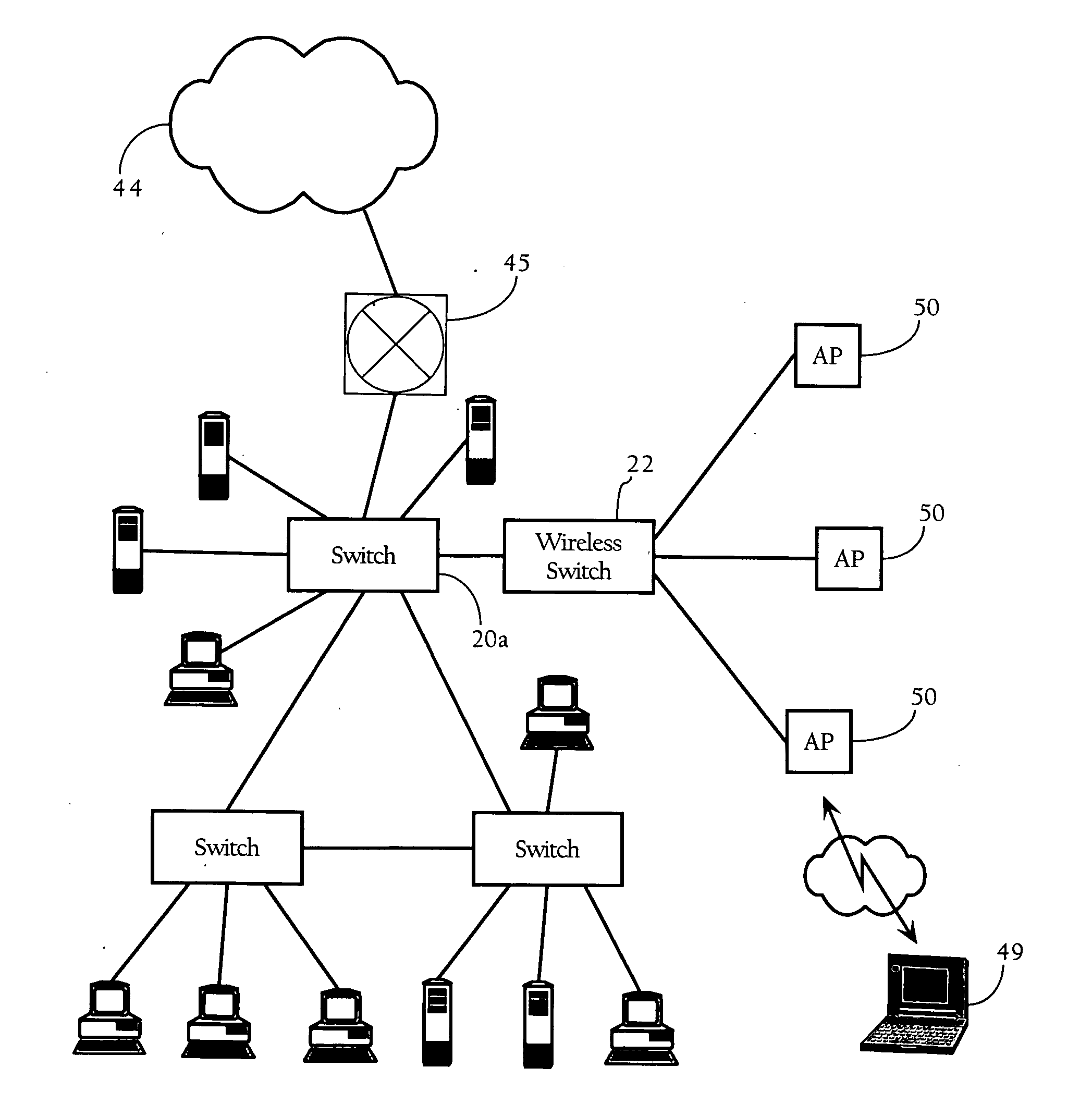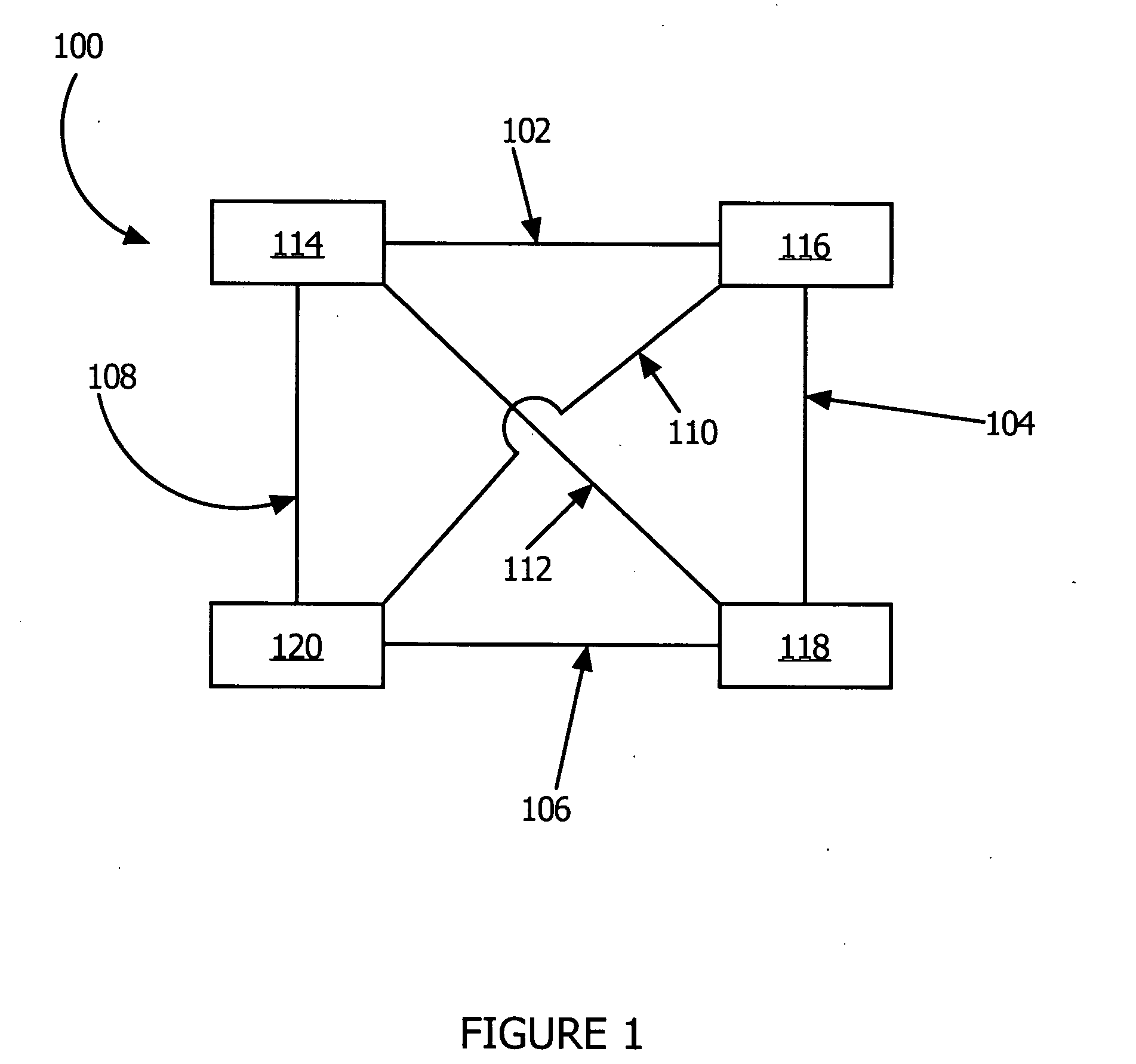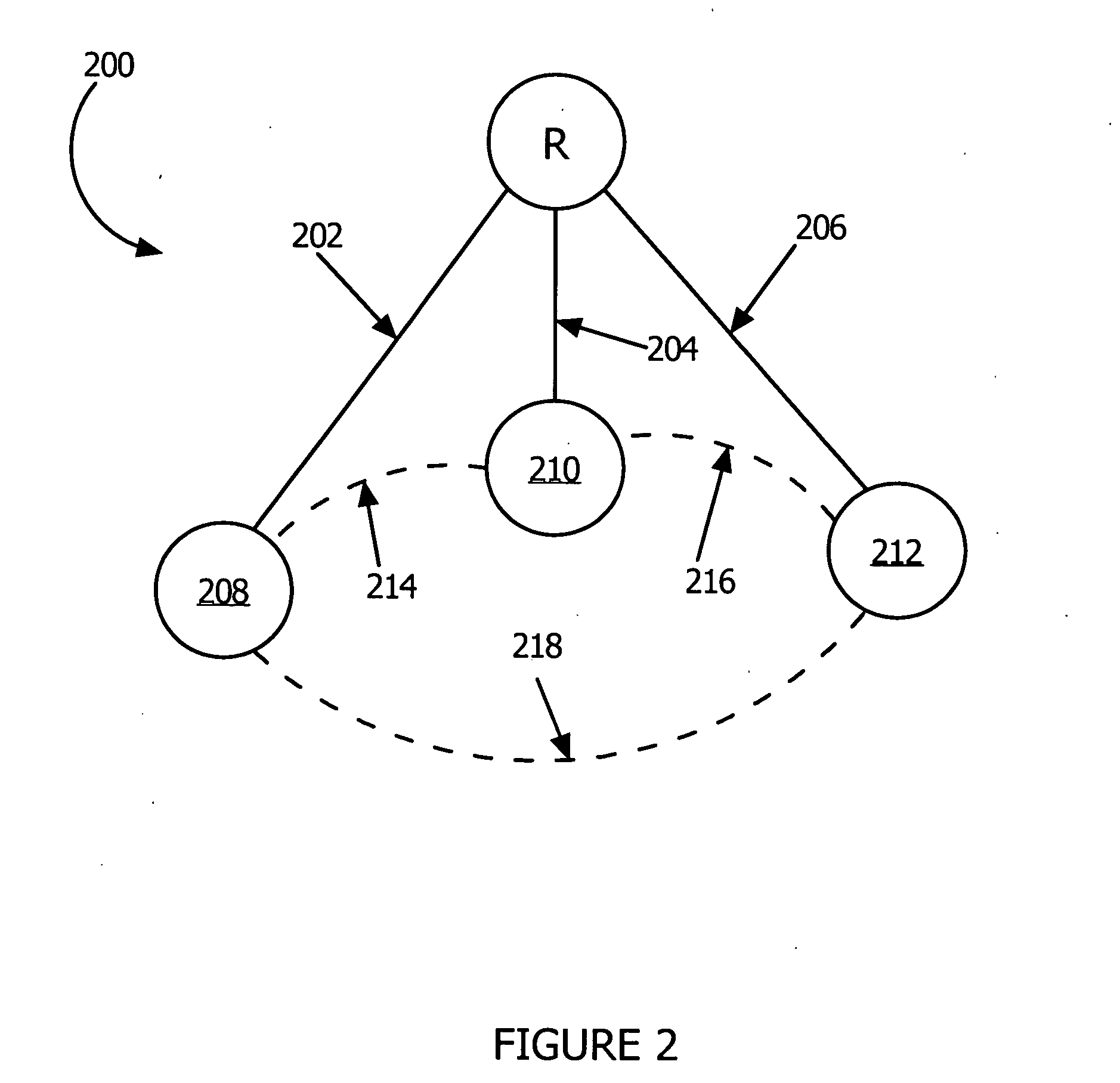Blocked redundant link-aware spanning tree protocol enhancement
a spanning tree and redundant link technology, applied in the field of link management protocols, can solve problems such as traffic storms, unsatisfactory situations, and transmission of superfluous packets, and achieve the effects of reducing bandwidth and available cpu power, and reducing the number of redundant packets
- Summary
- Abstract
- Description
- Claims
- Application Information
AI Technical Summary
Problems solved by technology
Method used
Image
Examples
Embodiment Construction
[0018] The following embodiments and aspects thereof are described and illustrated in conjunction with systems, apparatuses and methods which are meant to be exemplary and illustrative, not limiting in scope.
[0019] The claimed embodiments contemplate systems, apparatuses and methods for alerting a network device to stop forwarding network traffic to a blocked port. This is accomplished, in part, by sending a designated BPDU from a blocked port of one network device to another network device to stop sending packets. Upon receipt of this BPDU, the other network device will stop transmitting packets / frames to the blocked port except for BPDUs. To differentiate this designated BPDU from other BPDUs, it will be referred to as a port block notification message. In one implementation, the network device periodically transmits port block notification messages to the other network device to let the other network device know to continue not transmitting packets to the blocked port. In one im...
PUM
 Login to View More
Login to View More Abstract
Description
Claims
Application Information
 Login to View More
Login to View More - R&D
- Intellectual Property
- Life Sciences
- Materials
- Tech Scout
- Unparalleled Data Quality
- Higher Quality Content
- 60% Fewer Hallucinations
Browse by: Latest US Patents, China's latest patents, Technical Efficacy Thesaurus, Application Domain, Technology Topic, Popular Technical Reports.
© 2025 PatSnap. All rights reserved.Legal|Privacy policy|Modern Slavery Act Transparency Statement|Sitemap|About US| Contact US: help@patsnap.com



